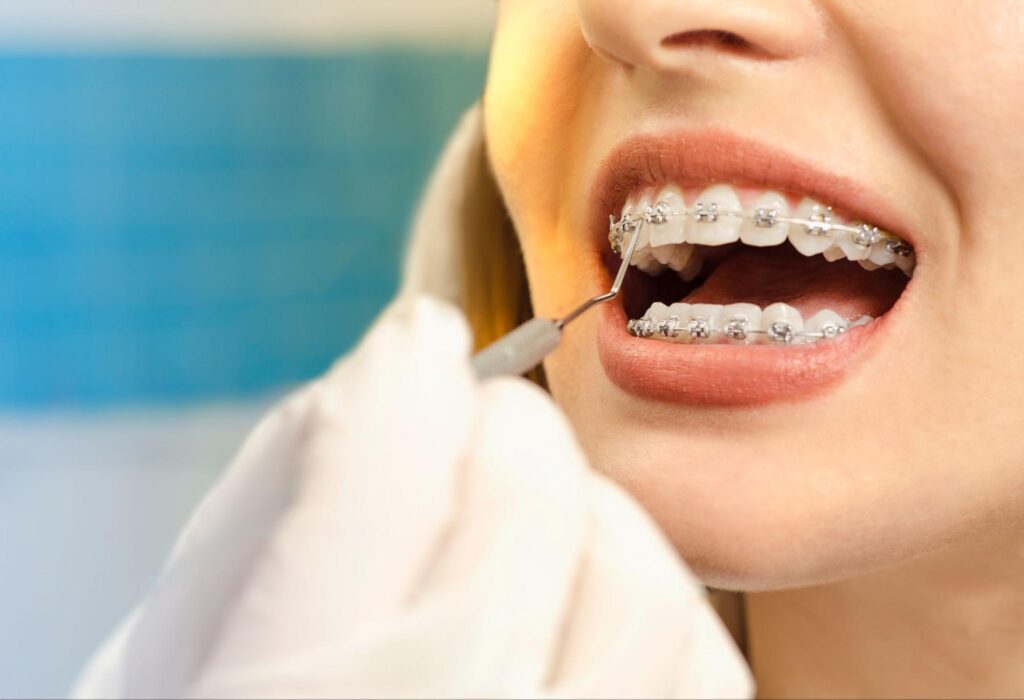At Orthodontics of South Miami, getting your first braces can be an exciting experience. Perhaps those colored elastics on your metal braces allow you to express your personality, or our clear aligners offer the discreetness you need in your professional life. Regardless of your preferred braces type, adjustments and tightening are still necessary.
This guide is a product of our 40 years of experience in orthodontics. Together, let’s learn about braces adjustments and tightening.
Why Does My Orthodontist Tighten and Adjust My Braces?
Your teeth are not static; in fact, did you know that your alveolar bone does the heavy lifting in perfecting your smile? Also called the alveolar process, the alveolar bone is a structure on your jaw that comprises your tooth sockets.
This bone is flexible, shifting according to your teeth’s formation and movement. As you go through your treatment journey, our team adjusts your braces to maintain gentle pressure on your teeth and ensure they’re moving into their proper positions, straightening and closing any gaps in your smile.
What Do I Expect When I Have My Braces Tightened?
Regular appointments are the bread and butter of your braces journey. As a rule of thumb, you’re expected to see Dr. Greg Ross and Dr. Len Rothenburg every four to six weeks, depending on their recommendations.
Without these appointments, achieving your ideal smile may take longer than usual. Here’s what to expect on your adjustment appointment with our expert team:
- Braces Check: Dr. Ross or Dr. Rothenburg will check your braces for damages. If you have metal braces instead of clear braces, we’ll ask you to select new color combinations for your elastic ligatures — which are the rubber bands that stabilize the archwire. This metal component is for connecting the brackets in your braces.
- Elastics and Archwire Removal: We will remove the elastic ligatures first followed by the archwire.
- Progress Check: After we remove the elastics and archwire, our team will take a look at your smile and see if your braces treatment is progressing as planned. From there, we’ll either replace the archwire or keep the old one.
As always, feel free to ask questions about your treatment. We love working with our South Miami clients, so you can count on us to help you achieve your smile goals.
- Attachment of New Elastics: Our team will attach a new set of elastic ligatures on the brackets.
- Discussion of Braces Maintenance and Oral Hygiene: If this is your first braces adjustment, we will teach you how to maintain your braces and oral hygiene throughout your smile journey.
The whole appointment should take around 20 to 30 minutes to complete.

What Should I Do Post-Braces Adjustment?
Every time we adjust your braces, a gentle pressure is applied on your teeth. Don’t be scared, though, because this sensation is normal until it subsides after a few days.
Still, it takes a little getting used to, especially if this is your first time having your braces tightened. Here are four tips to help you with that:
Take Medications: To help ease the slight discomfort, we recommend Tylenol (acetaminophen) It is anti-inflammatory and has been a go-to reliever for our braces patients in South Miami.
We don’t recommend Advil, though. While Advil also relieves the pressure sensation, it causes teeth to move slower, which entails a possible delay in treatment.
It’s important to remember that dosage and how often you should take Tylenol is up to Dr. Ross or Dr. Rothenburg. Don’t take over-the-counter medications without our go-signal.
Eat Softer Food: Post-braces adjustment means saying no to your favorite chips or hard food. For now, here are some foods you can munch on:
- Noodles
- Soup
- Mashed potatoes
- Oatmeal
- Bananas
- Pasta
- Cooked vegetables
- Yogurt
Because these food products are soft and easy to chew, they’re less likely to damage or get stuck between your newly adjusted braces. Interestingly, chewing helps boost blood flow to the teeth, providing additional relief post-adjustment.
Apply Orthodontic Wax: Usually composed of carnauba wax, beeswax, or other natural ingredients, orthodontic wax is safe to use in your mouth. To apply orthodontic wax, wash your hands and place a pea-sized wax on your finger. Then lather the wax not just on your teeth and gums, but also on your braces. This should reduce the rubbing sensation of your braces against your mouth.
Use A Wash Cloth or Ice Pack: Either or a combination of both works wonders in relieving the sensation within 10 to 20 minutes. When using an ice pack, take care not to put the ice cubes directly on your skin.
What Will Happen If I Don’t Have My Braces Adjusted?
Not having your braces adjusted will cause a setback in your progress. Loose or broken braces cause unwanted teeth movement, and your oral hygiene will be compromised due to nerve damage and increased plaque build-up.
Regular appointments with our expert smile team will prevent these issues. However, if you’re not available on the day of your appointment, don’t hesitate to contact our office so we can work on finding the best time and day for your visit.

Your Path to A Radiant Smile
There’s no denying the importance of regular appointments. By seeing Dr. Ross or Dr. Rothenburg and their team, you give your smile a chance to become beautiful, to turn it into something you’re proud of. If you need to have your metal or clear braces adjusted, give us a call and we’ll help you schedule an appointment.
